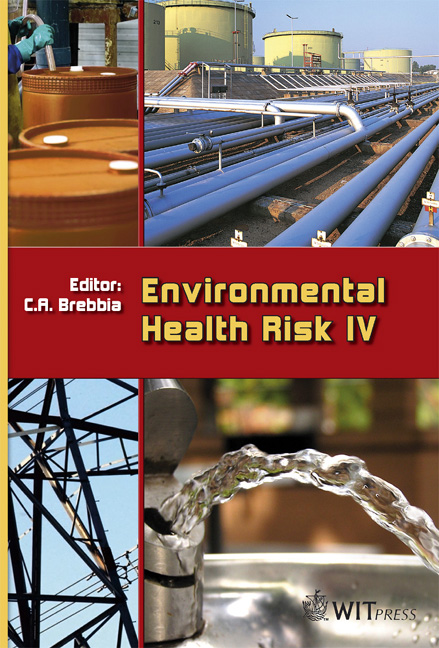Building Materials Vs. Fungal Colonization – Model Experiments
Price
Free (open access)
Transaction
Volume
11
Pages
8
Published
2007
Size
365 kb
Paper DOI
10.2495/EHR070081
Copyright
WIT Press
Author(s)
E. Piecková, Z. Pivovarová, Z. Sternová & E. Droba
Abstract
The antifugal potential of indoor building materials of 7 different types – without as well as with a paint or oily coating – was studied according to the ISO 846: 1997 E. Spore suspensions of micromycetes Acremonium sp., Aspergillus ustus, A. versicolor, Cladosporium sphaerospermum, Penicillium sp. and Scedosporium apiospermum were inoculated onto the materials’ surface (clean and dusty – to simulate the real state in the indoor environment). Systems were kept under defined water activities (aw) 0.94, 0.83 and 0.75 and incubated at 22– 25°C for 3 months. Microbial growth was evaluated visually after the 1st, 2nd and 3rd months of the experiment. At the end of the period, the vitality of fungal propagules on the material surfaces was estimated by the printing method onto Sabouraud agar medium. All building materials with any lime composition or oily coating showed a certain resistance to the fungal colonization, even under very moist conditions (aw = 0.94). Thus, their broader employment in the indoor environment could be emphasized. Representatives of the common airborne mycoflora – aspergilli, penicillia, and C. sphaerospermum – were able to develop visible growth on all materials tested with and without the house dust as well, although the colonization was of different degrees depending on the humidity. The fungi of Acremonium sp. and S. apiospermum favoured – as had been expected – the highest aw = 0.94 the most. No building material showed fungicidal properties – micromycetes were capable of germinating when printed from the material surface onto the agar. The dust reduced the materials’ antifungal properties only very moderately. A. versicolor – a producer of carcinogenic mycotoxin sterigmatocystin – could colonize materials under any experimental conditions. Wooden facings seemed to be the most resistant to the moulds. Keywords: building materials, indoor environment, moulds, water activity, temperature, antifungal properties.
Keywords
building materials, indoor environment, moulds, water activity, temperature, antifungal properties.





